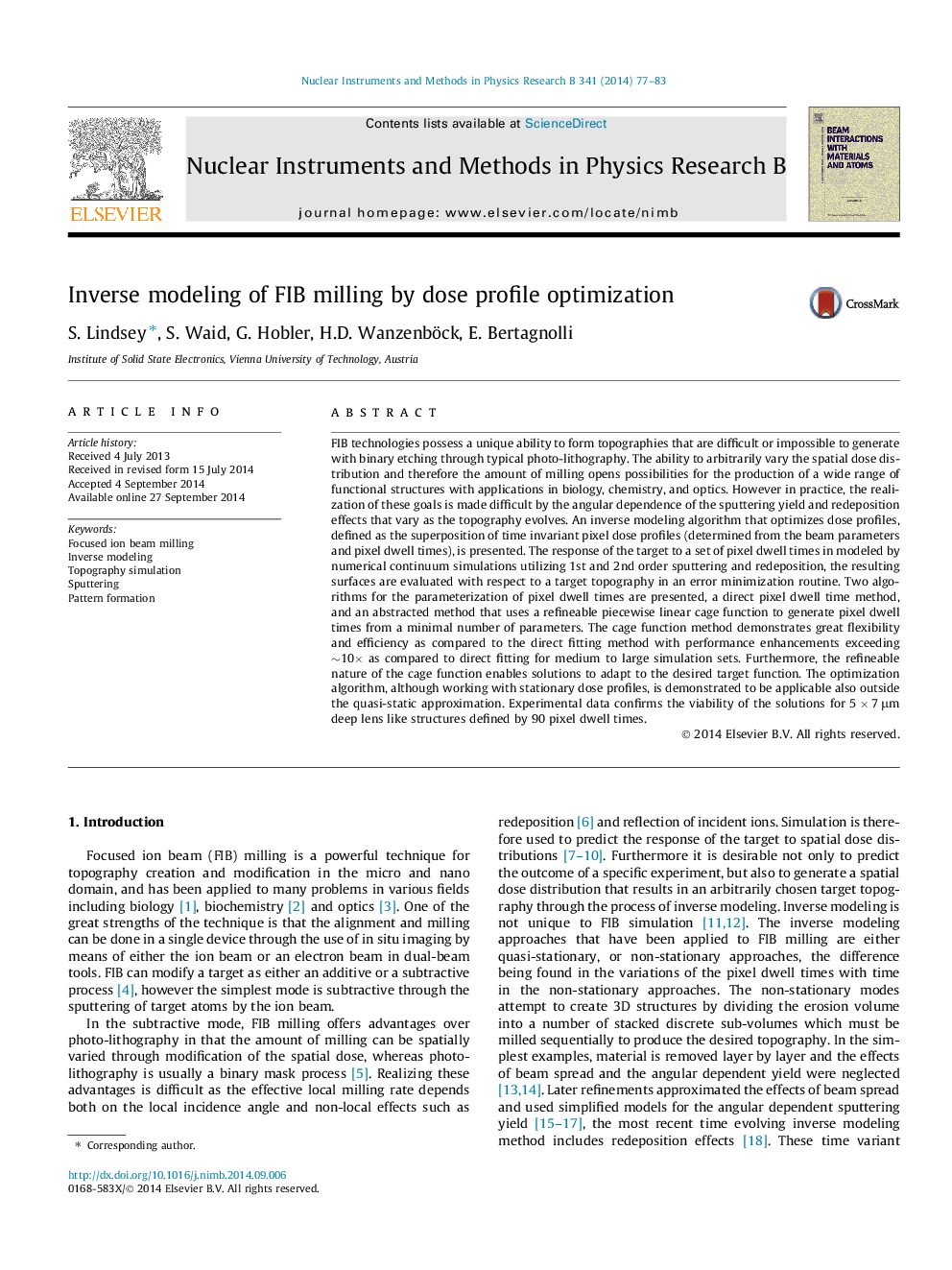| Article ID | Journal | Published Year | Pages | File Type |
|---|---|---|---|---|
| 1682915 | Nuclear Instruments and Methods in Physics Research Section B: Beam Interactions with Materials and Atoms | 2014 | 7 Pages |
Abstract
FIB technologies possess a unique ability to form topographies that are difficult or impossible to generate with binary etching through typical photo-lithography. The ability to arbitrarily vary the spatial dose distribution and therefore the amount of milling opens possibilities for the production of a wide range of functional structures with applications in biology, chemistry, and optics. However in practice, the realization of these goals is made difficult by the angular dependence of the sputtering yield and redeposition effects that vary as the topography evolves. An inverse modeling algorithm that optimizes dose profiles, defined as the superposition of time invariant pixel dose profiles (determined from the beam parameters and pixel dwell times), is presented. The response of the target to a set of pixel dwell times in modeled by numerical continuum simulations utilizing 1st and 2nd order sputtering and redeposition, the resulting surfaces are evaluated with respect to a target topography in an error minimization routine. Two algorithms for the parameterization of pixel dwell times are presented, a direct pixel dwell time method, and an abstracted method that uses a refineable piecewise linear cage function to generate pixel dwell times from a minimal number of parameters. The cage function method demonstrates great flexibility and efficiency as compared to the direct fitting method with performance enhancements exceeding â¼10à as compared to direct fitting for medium to large simulation sets. Furthermore, the refineable nature of the cage function enables solutions to adapt to the desired target function. The optimization algorithm, although working with stationary dose profiles, is demonstrated to be applicable also outside the quasi-static approximation. Experimental data confirms the viability of the solutions for 5 Ã 7 μm deep lens like structures defined by 90 pixel dwell times.
Related Topics
Physical Sciences and Engineering
Materials Science
Surfaces, Coatings and Films
Authors
S. Lindsey, S. Waid, G. Hobler, H.D. Wanzenböck, E. Bertagnolli,
